
Mount Dora Series | Watercolor Paintings
The Mount Dora watercolors were painted on Arches 140 lb. hot-pressed watercolor paper.
All Mount Dora watercolors are on rotation among various local venues including, but not limited to: Mount Dora Public Library, Mount Dora City Hall, Mount Dora Community Center, and the Simpson Farmhouse (Library Annex)

LAKE DORA LIGHT
It is appropriate to present this painting first because, "the only inland lighthouse in the State of Florida," is an icon for the City of Mount Dora. Renderings of the light are ubiquitous, It appears on everything from the City seal and logos to tee shirts, signs and every type of souvenir imaginable.
However, a representational painting or decent photo of the light is difficult because of the uninspired, mundane ambience in which it exists.
Although presented first, the painting was not the first of the Mount Dora paintings. It came into being only after numerous unsuccessful attempts. An acceptable rendering did not occur until the Artist was able to capture the early morning light and use a bit of artistic license to create the foreground.
The painting has never been entered in competition but it got caught up in the iconism, appearing on tee shirts, mugs, earrings, fine art prints, post cards and even a U. S. Postal Service cachet (see below).
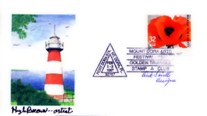
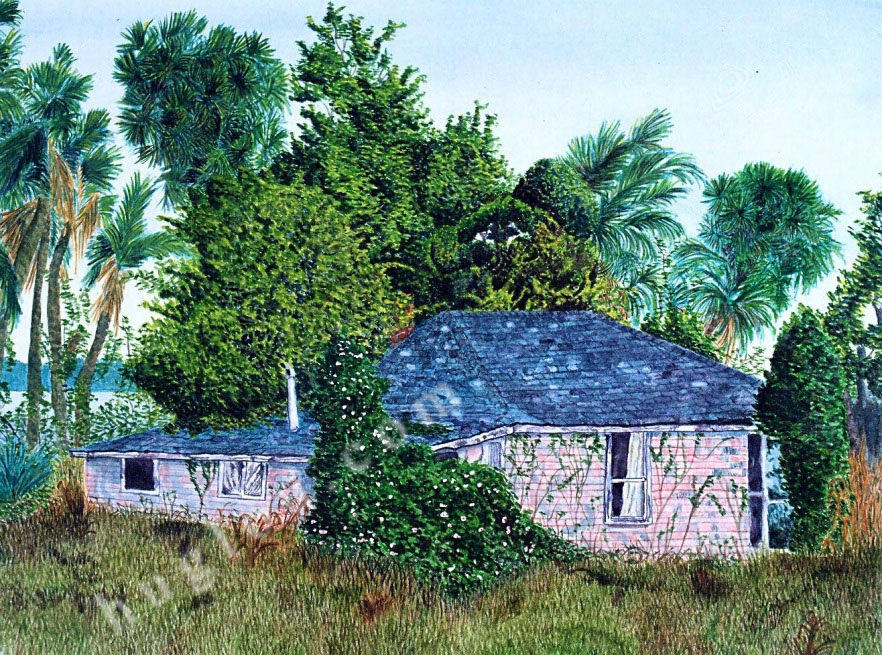
KUMQUAT HOUSE
Rosewood was not the only movie made in Mount Dora. In 1980, Honkytonk Freeway required the City's downtown buildings to be painted pink. A remnant of that can be seen on Kumquat House. Originally the second floor of the first general store in Mount Dora, it was moved from its Lake Dora wharf location to the Lakeside Inn grounds where it served as a residence for seasonal staff. It was demolished in 2002. It is the Artist's favorite Mount Dora watercolor.

CRACKER HOUSE
An example of a typical 19th Century Mount Dora house. It is characterized by the window and door arrangements that capture maximum breezes, the second story "mosquito porch" and the tin roof. Most of these homes have been destroyed by developers. This one has been converted to apartments.

UNITY HOUSE
To avoid destruction, this house was moved so that a professional office building (an ugly monstrosity) could be built on its downtown lot. It was the home of the Mount Dora Historical Society but after renovation is now a city-owned annex to the library and renamed "Simpson Farm House."
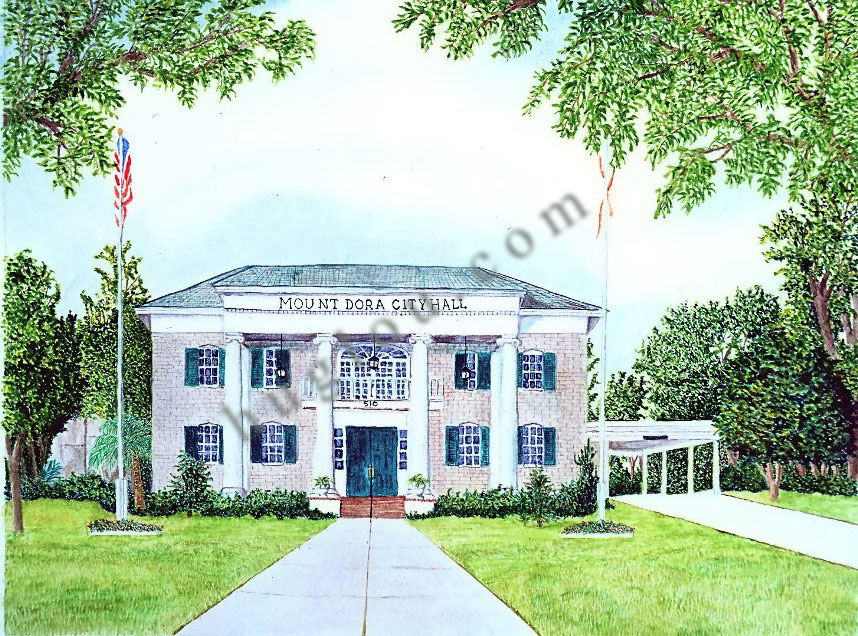
CITY HALL
Built on the hilltop site of a hotel called the Colonial Inn, it retained the distinctive columns of that structure. It has been regarded as one of the more impressive city halls in Florida. A 2002 remolding has destroyed much of its character.
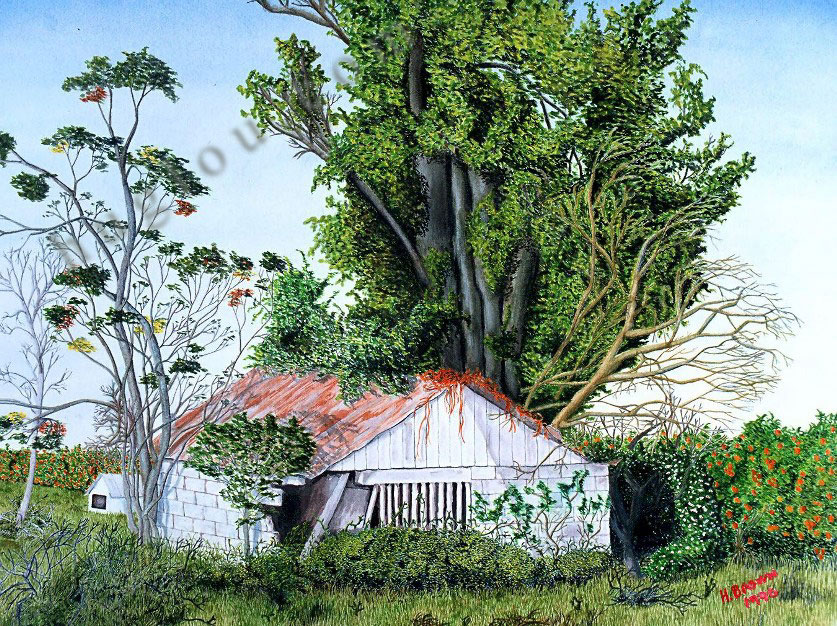
SIMPSON'S DAIRY
A remnant of Simpson's Dairy, now a decrepit shed overgrown with foliage. It sits on the edge of an orange grove. There is also a 9" X 12" rendering.

CONGREGATIONAL CHURCH
Built in 1883, it is Mount Dora's oldest church.

MOUNT ZION BAPTIST CHURCH
Located on the outskirts of Mount Dora, the structure is one of the first sights visitors see. The congregation remains active and the building remains a prime example of the architecture of Afro-American rural southern churches.

CITY LIMIT SIGN
For many years the sign was located across U. S. 441 from the Mt. Zion Baptist Church. In this painting, the viewer can appreciate the rolling countryside characteristic of the area. The sign has been replaced by a less pretentious version and a gasoline station/convenience store now serves as its background.
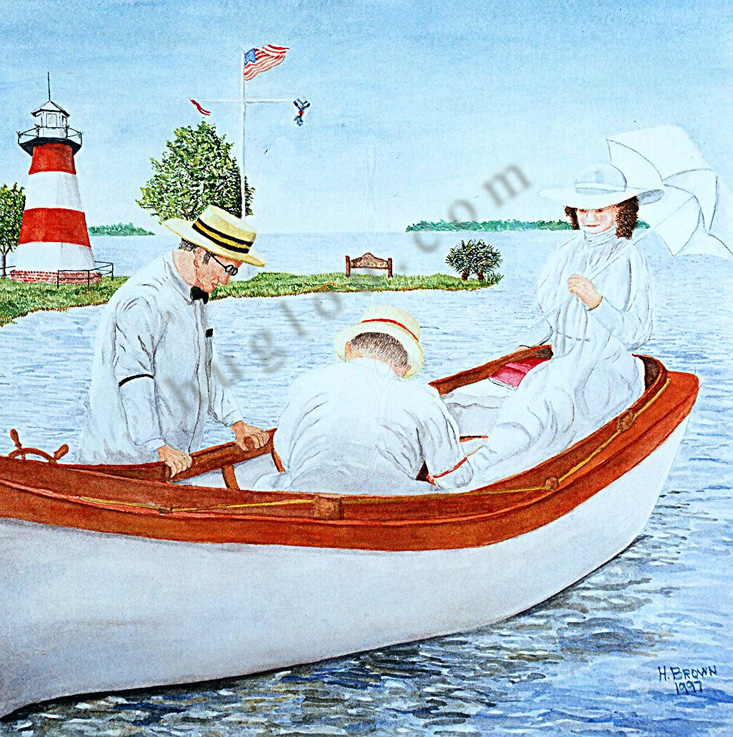
ANTIQUE BOATERS
Period mahogany boats and period costumes are fine, but period motors are often cranky about starting. Mount Dora no longer hosts the annual antique boat show.
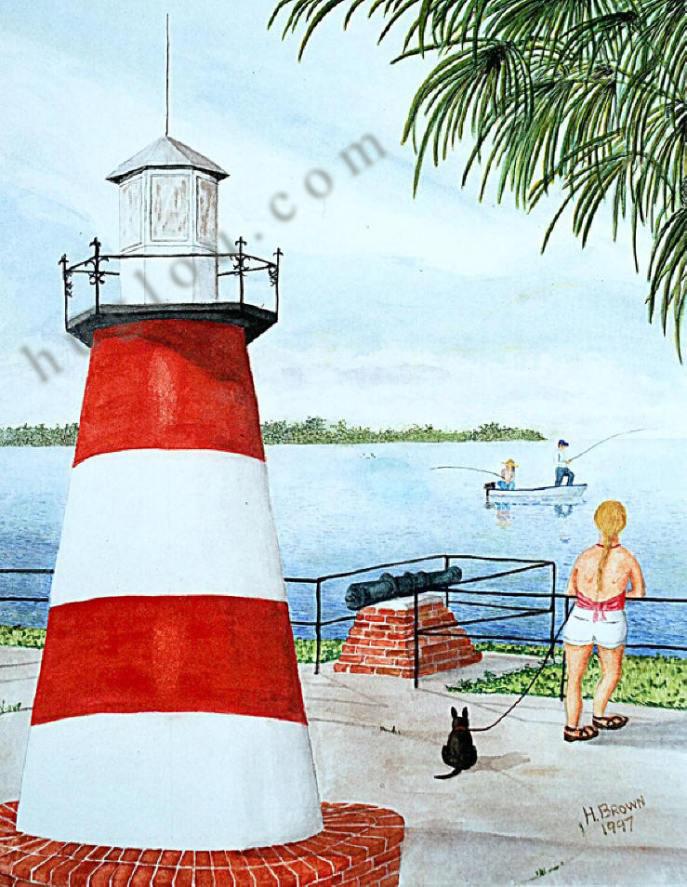
A CALM MORNING FOR FISHING LAKE DORA
Here, quite a bit of artistic license was taken with regard to the uninspiring setting of the Lake Dora Light. The small size of the light (about 25 feet high) is maintained. It is definitely not a soaring dramatic structure as, for example, the Key Biscayne or Ponce Inlet Light depicted in the Oil Painting section.
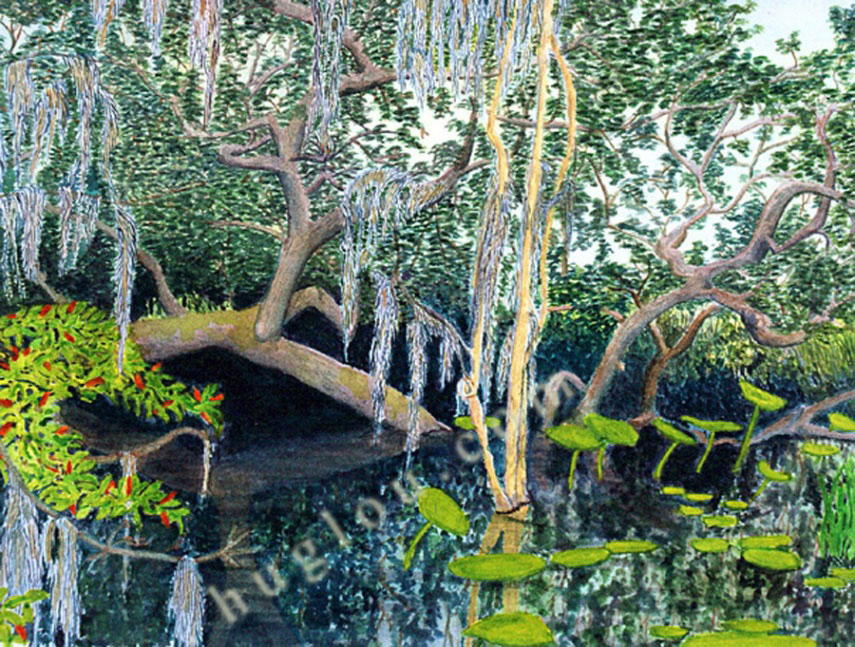
GATOR POND
Gator Pond and its companion, Palm Island Walk, were the first serious watercolors painted by Dr. Brown. Both were entered in the 1995 Juried Art Competition. Both were accepted for exhibit and won honorable mentions.
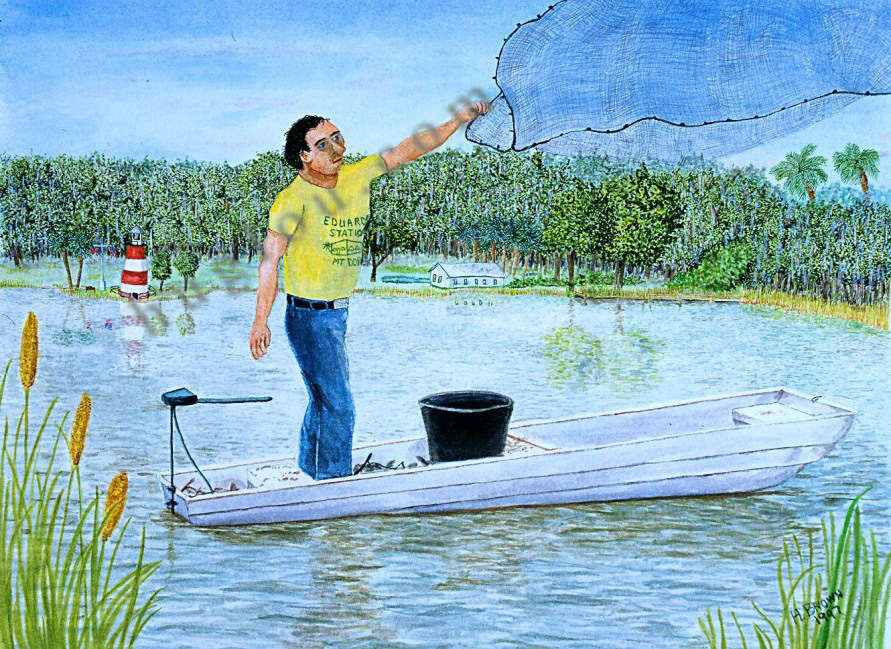
LAKE DORA NET FISHERS
Net fishers are a common site on Lake Dora. Most likely the goal is to obtain bait fish rather than food fish. Eduardo's Station, on the fisher's shirt was once a Mount Dora restaurant and bistro.
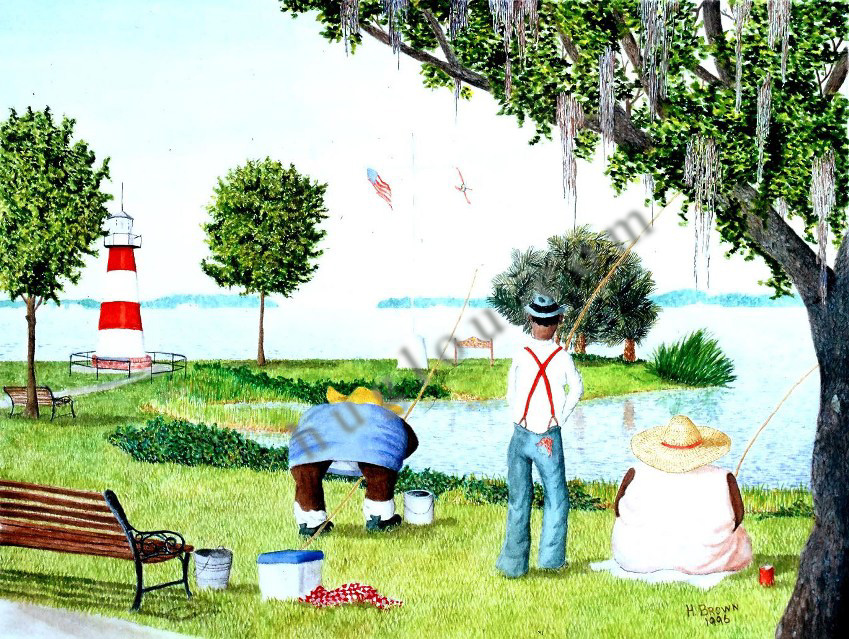
LAKE DORA FISHERS
Sketched plien air and later painted, food fishing is common on Lake Dora even though the fish have significant levels of mercury.

MICKEY MOUSE
A composite of two buildings and two willing models, the painting is the top winner among the Mount Dora Watercolors. It has taken several prizes and awards in competitions.
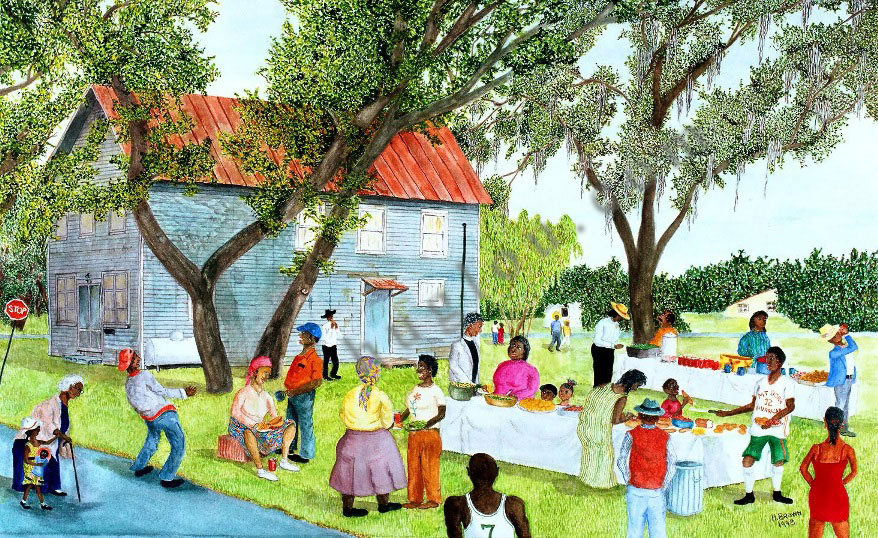
CHURCH PICNIC
The building is designated a historic landmark as the first home of the area's Black Masonic Lodge. It's sometimes used as a church, the ample grounds affording room for picnics.

LAWN BOWLERS
The Mount Dora Bowling Club is one of the oldest in the United States and an internationally recognized venue. An observer is struck by the diversity of body language and posing by the bowlers. The paintings are in the collection of the Mount Dora Bowling Club where they are on exhibit.
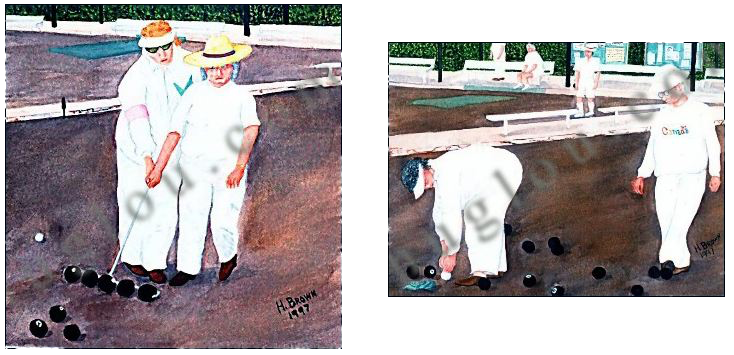
LAWN BOWLERS
The Mount Dora Bowling Club is one of the oldest in the United States and an internationally recognized venue. An observer is struck by the diversity of body language and posing by the bowlers. The paintings are in the collection of the Mount Dora Bowling Club where they are on exhibit.
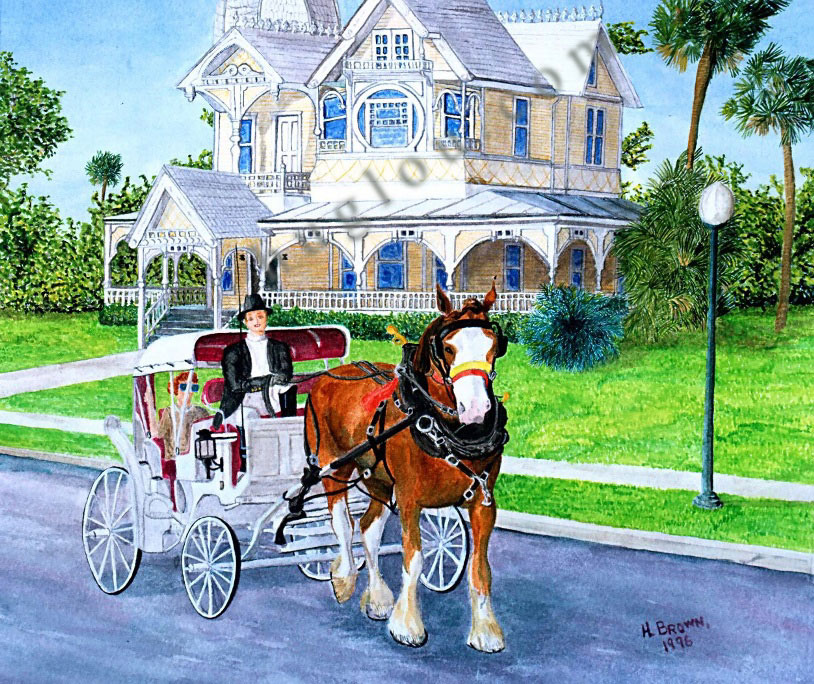
HORSE AND CARRIAGE PASSING DONNELLY HOUSE
Donnelly House was the home of J. P. Donnelly, a Mount Dora founder. It is across Donnelly Street from Donnelly Park. The house is now a Masonic clubhouse. Horse and Carriage is a common way of touring Mount Dora. The painting is far and away the most popular of the Mount Dora Watercolors in terms of sales of fine art prints and items bearing its image.
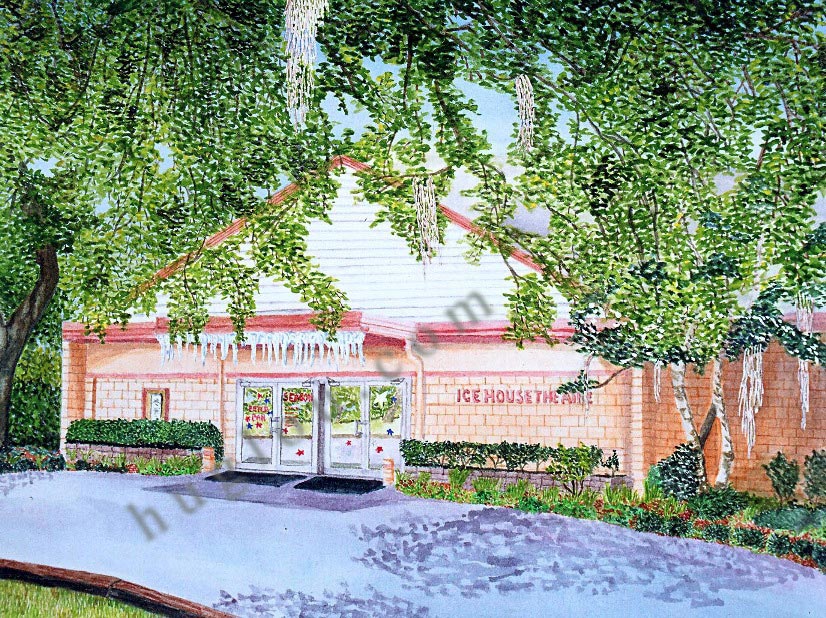
ICE HOUSE THEATRE
The original Ice house Theatre was a converted ice house located near the Mount Dora marina. It was ultimately demolished after a new Ice House Theatre was built further away from the train tracks as the noise routinely interrupted performers.
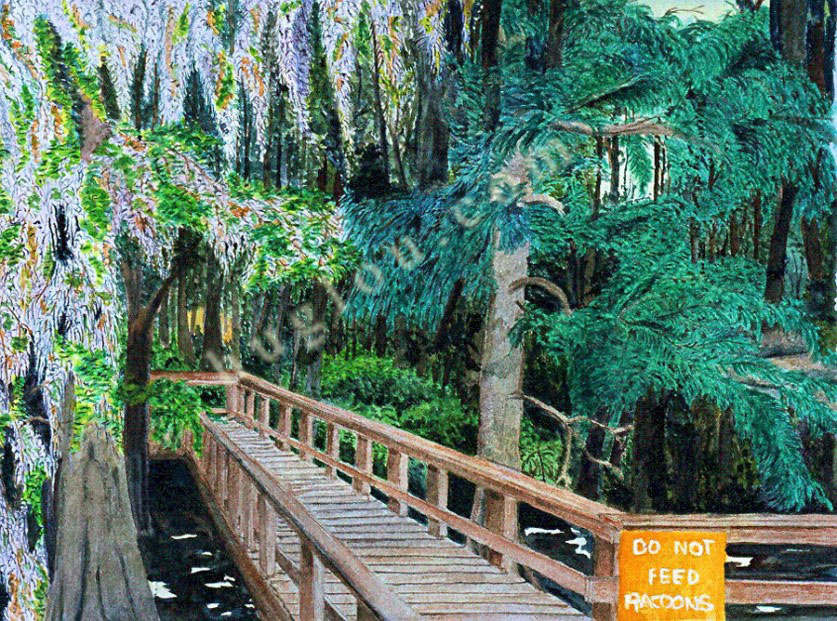
PALM ISLAND WALK
Palm Island is a Mount Dora park where one can walk through a preserved section of Florida wilderness and observe the flora and fauna including alligators.
The walk provides access to the Mount Dora Nature Preserve. Gator Pond, can be seen from the walk.
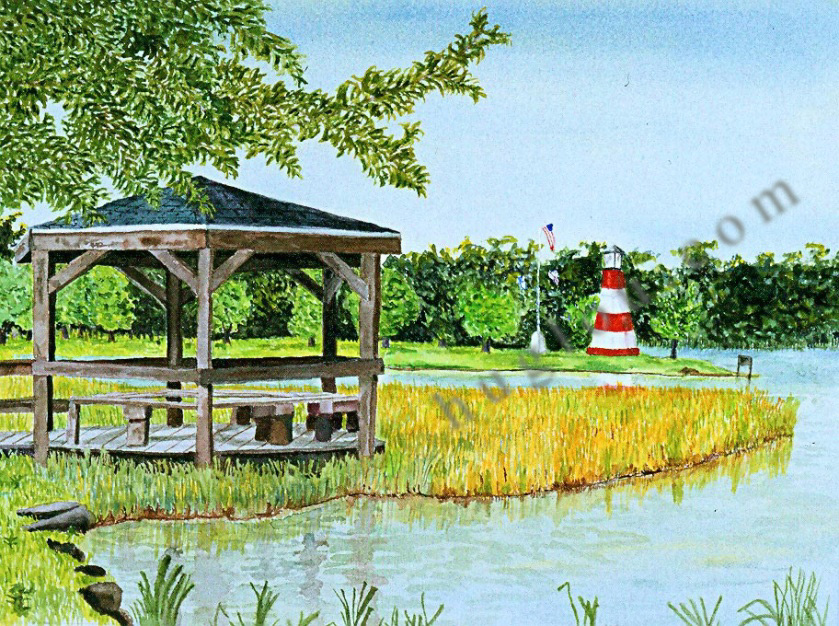
EVANS PARK GAZEBO
A small or "pocket" park, a type favored by Mount Dora, Evans Park is directly across the lake inlet from Palm Island. The Lawn Bowling Association and Lakeside Inn are directly behind Evans Park.
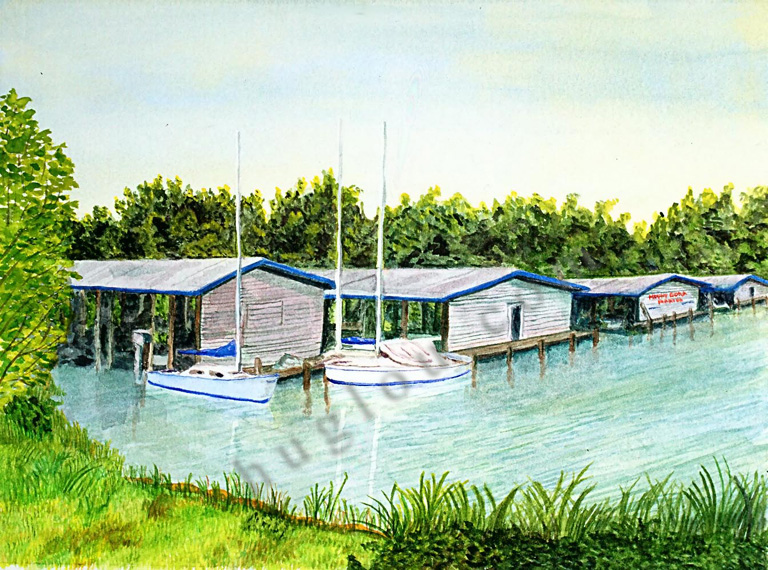
MOUNT DORA MARINA
Lake Dora is one of the "Chain-of-Lakes", a continuous series of waterways that eventually outlet into the St. John's River and Atlantic Ocean at Jacksonville. Mount Dora is an active boating community. It even has a yacht club.
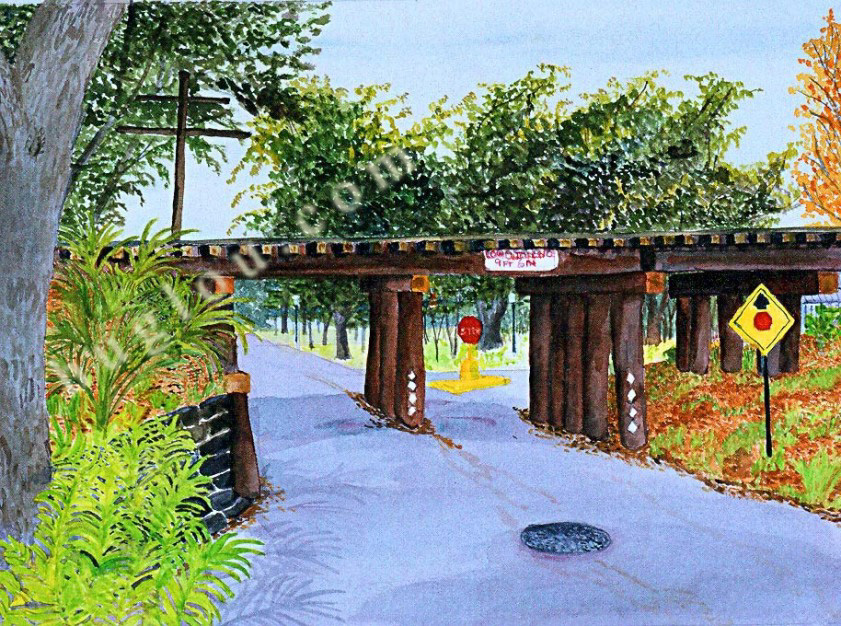
TREMAIN STREET BRIDGE
The railroad has been an essential part of Mount Dora since it earliest days. There are many trestles and crossings throughout the city but none is as dramatic as the Tremain Street Bridge. The Marina and the Light are just beyond the stop sign.

RAILROAD DEPOT
Now the home of the Mount Dora Chamber of Commerce, the depot was once the hub of town activity as trains brought in everything from the daily news to guests for the Lakeside Inn just across the tracks. Trains still run for recreational activities such as sight-seeing, dinner-on-the-diner and excursions to Orlando for special events.
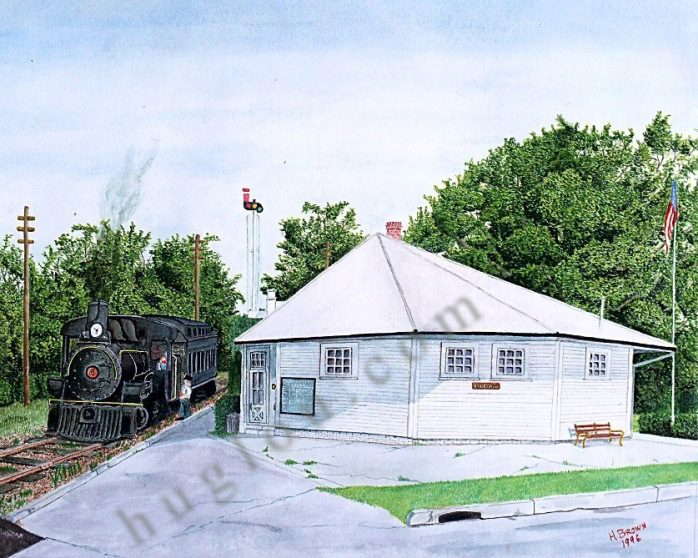
ROSEWOOD TRAIN VISITS MOUNT DORA
Some of the scenes for the movie Rosewood were shot on various locations around Mount Dora. The train used in the movie sometimes came to Mount Dora. The painting is in the collection of the Mount Dora Chamber of Commerce where it is on exhibit.
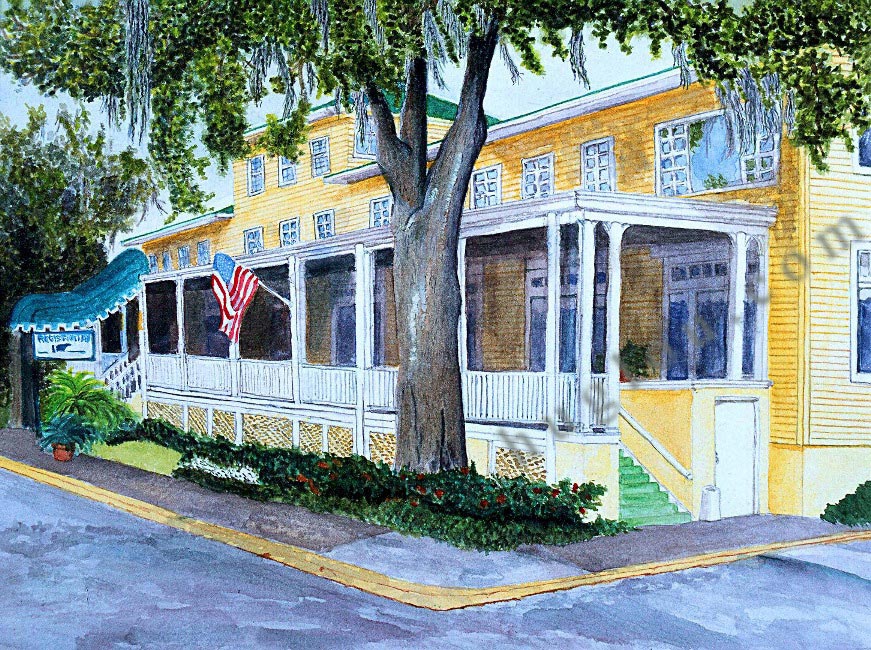
LAKESIDE INN
A venerable Mount Dora institution, the Inn traces its origin to the 1880's. It is still operational, offering guests modern facilities in an old Florida ambience and an Art Deco dining room.

5TH AVENUE AND DONNELLY STREET
The main intersection in Mount Dora, the ironwork balcony is a longtime landmark. The painting remained unfinished due to low motivation on the part of the Artist.

THE ARTIST VISITS THE ART CENTER
Dr. Brown regularly visited the Mount Dora Art Center where his paintings were on permanent exhibit for several years. With that, the Mount Dora Watercolor presentation is complete.